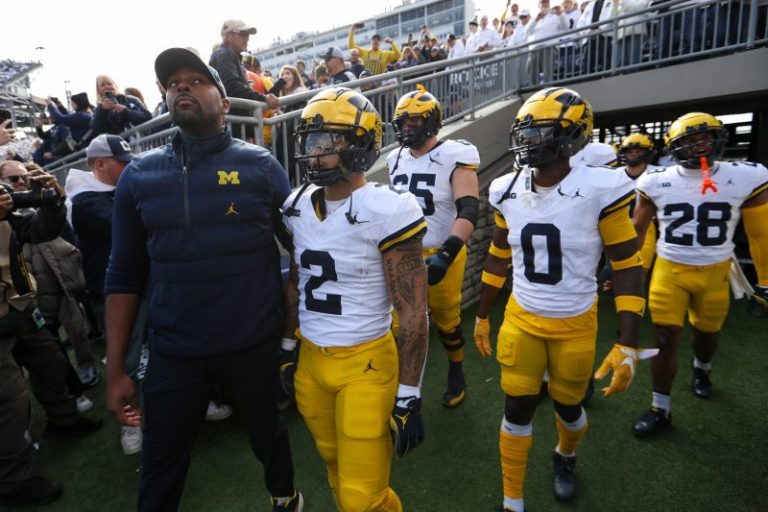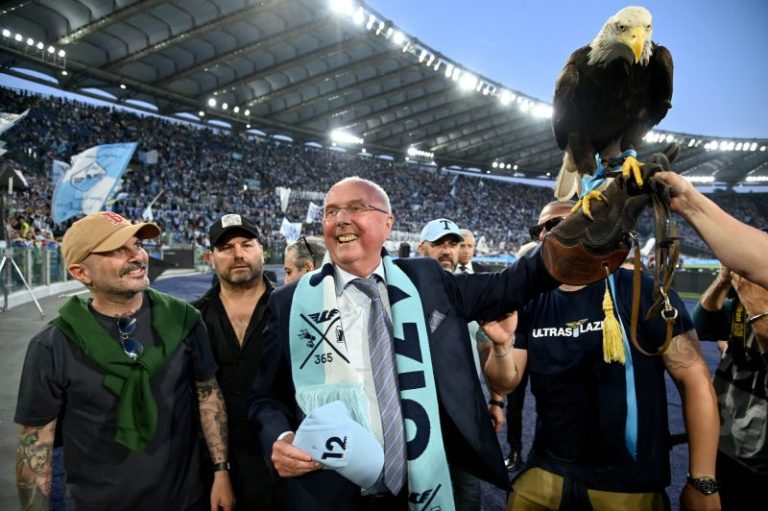Reach seven consecutive American League Championship Series and win a pair of World Series in that span and yes, the Houston Astros have earned every benefit of the doubt, every expectation that since they have so much respect for the grind of a 162-game season, that their desired outcome will await them in the end.
And as summer creeps toward autumn, there they go again: A 70-60 record, a 4 ½-game lead in the AL West, a nearly 90% chance of making the playoffs, and a 63-41 rally that inspired their chief competition to fire their manager.
Yet make no mistake: The Astros have a little panic in them, too.
There was good reason: Twenty-six games into rookie manager Joe Espada’s tenure, they were 7-19 and in the West cellar, facing a 6 ½-game deficit that would grow to 10 games by June 18. The forthright public proclamations that things would turn belied an early-season urgency the Astros simply hadn’t needed in this era.
Follow every MLB game: Latest MLB scores, stats, schedules and standings.
“Don’t get me wrong: We’re in here knowing what’s going on,” veteran pitcher Justin Verlander tells USA TODAY Sports. “We know we need to turn it around. We had some team meetings and OK, we (expletive) can’t wait to turn this around. We need to make this happen. Let’s play our playoff brand of baseball for a little while. Push it. We need to push the issue to make things turn.
“These guys did just that.”
Nobody’s played better than Houston since that grim beginning, as they overcame an entire pitching rotation’s worth of injuries, the dismissal of a historically bad veteran bat and the growing pains of young pitchers taking their lumps at the big league level – and eventually flourishing.
Houston caught the offensively-floundering Seattle Mariners by July 19, left them behind for good on Aug. 12 and hits the stretch drive with confidence while Seattle faces the storm with a first-time manager anointed just days ago.
Same as it ever was?
“That winning culture is huge here. We take pride in protecting that,” says Espada, promoted after six years as the Astros’ bench coach to replace Dusty Baker in the manager’s office. “It’s what allows us to get through tough stretches early in the season.
“Our players know how important it is to stay together and fight through things.”
And sometimes, improvise a little.
‘An incredible job reinventing himself’
The body blows just kept coming: Verlander, a sore shoulder to begin spring training and a neck injury limiting him to 11 starts. Rehabbing right-handers Lance McCullers Jr. and Luis Garcia unable to answer the bell in 2024.
Playoff heroes Cristian Javier and Jose Urquidy: Tommy John surgery. Useful right-hander J.P. France: Shoulder surgery.
The injury list would be stunning if similar plagues hadn’t struck pitching staffs in Los Angeles and Baltimore and Tampa Bay. The trick is having the wherewithal to respond.
And for nine starts, Hunter Brown was not up to the task.
The 25-year-old right-hander in his second full season was part of the problem, not the solution, lugging a 7.71 ERA and just one start of at least six innings through his first nine outings. Paired with a rookie season in which he hit the wall and posted a 6.57 ERA in a dozen second-half starts, it was a significant step back for a player expected to emerge as a rotation anchor.
So, Brown looked within – himself and the Astros clubhouse.
He received what he called “some computer nerd numbers” from the coaching staff that buttressed his confidence, that some of his misfortune was, in fact, poor luck. Yet after giving up an .839 OPS to opposing right-handed hitters last season, he tapped into the human resources around him.
Namely, veteran right-handed hitters Jose Altuve, Mauricio Dubón and Alex Bregman.
“Talking to the guys in the clubhouse, I asked them, as right-handed hitters, how would you guys come up and face me?” recalls Brown. “And they’re like, ‘Oh, I can just sit hard away. Everything’s breaking away.’ And I was like, ‘OK, maybe I need to get in on guys.’ And that’s kind of how I started throwing the two-seam (fastball), after asking guys in the clubhouse.
“Pretty much since that point, things have been going a lot differently than they did in the first month. A mentality change and adding the two-seamer.”
Indeed, Brown is an entirely different pitcher in both attack and outcome, largely junking his four-seam fastball/curveball approach for the sinker, cutter and changeup. His low point came April 9, when he recorded two outs but gave up nine runs to the Kansas City Royals while throwing his four-seamer 40%, his curve 23% and his cutter just 8%.
In his most recent gem, a seven-inning, one-run throttling of the Chicago White Sox on Aug. 17, his four-seam usage dropped to 25% while throwing his cutter, sinker and changeup a combined 62%.
Since June 1, no one has been better than Brown’s 10-2 record and 2.33 ERA.
“What an incredible job he’s done reinventing himself,” says Verlander. “The second he decided to make that adaptation, he really took off. It’s the old adage – let the hitter tell you what you need to do.”
Rookie Spencer Arrighetti has taken similar, smaller steps forward, getting hammered as he was rushed into the rotation out of need in April, only to stabilize and turn in at least six innings in seven of his last 10 starts. He’s struck out 36 batters in his last 24 ⅔ innings.
Veteran stalwart Framber Valdez’s 2.73 ERA since June 1 rivals Brown’s. Verlander is back, and the Astros won trade-deadline pickup Yusei Kikuchi’s first four starts. Suddenly, the once-ravaged Astros – whose 2.72 rotation ERA this month leads the majors – have an enviable rotation.
“They did it with maturity, they did it with the help of our veterans,” says Espada of Brown and Arrighetti’s emergence. “It’s a long, long season. Us as a coaching staff, to be patient and help them through this process is not easy.
“All those guys are turning a corner.”
Too much cargo
A little addition by subtraction hasn’t hurt, either.
Just hours after winning the 2022 World Series, GM James Click was dispatched by owner Jim Crane, leaving the front office rudderless until the January 2023 hiring of current GM Dana Brown.
In the interim, Crane and his aide-de-camps loosened the checkbook, signing veteran first baseman Jose Abreu to a three-year, $58.5 million deal and re-signed reliever Rafael Montero to a three-year, $34.5 million pact.
By the end of April, Abreu’s MLB-worst production was finally untenable and he was dispatched to the minor leagues, and released in June, with nearly $31 million left on his contract. Montero was designated for assignment July 31, even as he, too, will be paid through 2025.
Abreu’s playing time has largely gone to veteran Jonathan Singleton, who has provided just a 93 adjusted OPS and suboptimal defense. Yet Abreu’s adjusted OPS was 3 – yes, three – and he’d racked up minus-1.6 Wins Above Replacement in just 120 plate appearances. Singleton, at the least, has an elite chase rate of 22.5% and grinds out quality at-bats.
Other areas have solidified. Closer Josh Hader, signed to a $95 million deal this winter, has cashed in a club-record 28 consecutive save chances after posting an 8.38 ERA during their 7-19 start. Third baseman Alex Bregman did not hit a home run until the 29th game of the season, but now has 21 and an .842 second-half OPS, .966 in August. All-Star outfielder Kyle Tucker, out since June, sent ‘a long text message’ to Espada on Sunday, detailing his baseball activities in hopes of returning from a vexing shin injury, hopefully before the playoffs.
This week, they return to Philadelphia for the first time since Javier helped author a World Series no-hitter and the stage was set for their second championship in eight years. It continues a challenging stretch in which 17 of 20 games are against likely playoff clubs Baltimore, Philadelphia, Kansas City and Arizona.
Their final home series comes against Seattle, which may be momentous or a formality, but will surely be relevant in some way. That was hard to imagine four months ago, a period that tested even the most seasoned stalwarts.
“That stuff is why 162 games is a testament to the kind of club you have,” says Verlander, 41, already talking about returning to 30-start form in 2025.
“Because those things don’t last forever. And I think it is nice to be able to rest your hat on that.”
The USA TODAY app gets you to the heart of the news — fast. Download for award-winning coverage, crosswords, audio storytelling, the eNewspaper and more.










